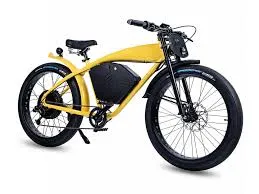9 月 . 24, 2024 20:48 Back to list
kids' balance bikes
The Rise of Kids' Balance Bikes A Pathway to Independence and Confidence
In recent years, the popularity of balance bikes for young children has significantly increased, capturing the attention of parents and educators alike. These innovative two-wheeled vehicles, designed specifically for toddlers and preschoolers, offer a fun and effective way for children to develop their riding skills while fostering a sense of independence. This article delves into the benefits of kids' balance bikes, their history, and how they serve as an essential tool in a child's physical and emotional development.
What are Balance Bikes?
Balance bikes are lightweight, pedal-less bicycles that allow young children to propel themselves using their feet. They come equipped with two wheels and a frame that is adjustable to accommodate growing children. Designed primarily for children aged 18 months to 5 years, balance bikes help children learn the essential skills of balance and coordination without the intimidation of pedals and gears.
Benefits of Balance Bikes
1. Developing Balance and Coordination Learning to ride a balance bike helps children find their center of gravity and develop coordination. By pushing off the ground with their feet and steering, kids gradually learn to balance on two wheels, which is a critical skill when transitioning to traditional bicycles.
2. Building Confidence The experience of successfully riding a balance bike gives children a sense of accomplishment and boosts their confidence. As they gain control over their movements, they become more willing to attempt new challenges, both on and off the bike.
3. Promoting Physical Activity Balance bikes encourage outdoor play and physical activity. In a world increasingly dominated by screens, providing children with a fun way to be active is more important than ever. Riding a balance bike can improve cardiovascular health, strengthen muscles, and enhance overall fitness.
4. Fostering Independence Balance bikes empower children to navigate their surroundings on their terms. As they learn to ride independently, they also learn how to assess their environment, make decisions, and take calculated risks—essential skills that foster independence in everyday life.
5. Social Engagement Riding a balance bike often occurs in communal spaces such as parks and playgrounds, where children can interact with peers. This shared experience encourages social play and helps children develop important social skills like cooperation, communication, and teamwork.
A Brief History of Balance Bikes
kids' balance bikes

The concept of the balance bike can be traced back to the early 19th century when Baron Karl von Drais invented the dandy horse, a wooden, two-wheeled contraption that allowed riders to push themselves along the ground. Fast forward to the late 20th century, and balance bikes began to emerge as a modern alternative to traditional bicycles. They gained traction, particularly in Europe, and quickly found their way into the playgrounds of North America.
Today, balance bikes come in various designs, colors, and materials, catering to a wide audience. With enhanced safety features—such as smaller frames and better braking systems—manufacturers prioritize the well-being of young riders. This evolution has solidified the position of balance bikes as a staple in early childhood development.
Choosing the Right Balance Bike
When selecting a balance bike for a child, parents should consider a few key factors
- Size and Weight The bike should be lightweight and appropriately sized for the child. The child should be able to comfortably place their feet flat on the ground while sitting on the seat.
- Material Balance bikes are typically made from wood, metal, or plastic. Wooden bikes may offer a classic aesthetic, while metal ones are generally more durable.
- Adjustability An adjustable seat height allows for prolonged use as the child grows. This feature can significantly extend the life of the bike.
- Safety Features Look for bikes with features like padded seats and easy-to-use brakes to ensure a safe riding experience.
Conclusion
In summary, kids' balance bikes provide a fantastic way for young children to develop essential skills while having fun. By fostering balance, coordination, physical activity, and independence, balance bikes serve as a crucial foundation for future biking experiences. As the trend of balance bikes continues to rise, parents can take comfort in knowing they are investing in their child’s growth and confidence, setting the stage for a lifetime of adventure on two wheels.
-
The Main Application Scenarios of Mountain Bike
NewsOct.29,2024
-
Suggestions for Selecting and Maintaining Mountain Bike
NewsOct.29,2024
-
Characteristics of Kids Balance Bike
NewsOct.29,2024
-
Characteristics of Baby Stroller
NewsOct.29,2024
-
Characteristics and Advantages of Mountain Bike
NewsOct.29,2024
-
Baby Stroller Purchasing Suggestions
NewsOct.29,2024
-
Suggestions for Purchasing Kids Balance Bike
NewsOct.09,2024

